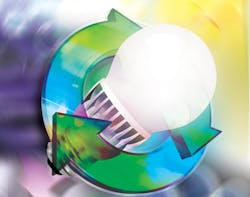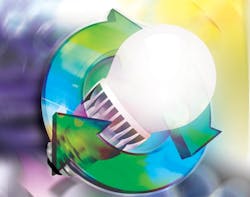MR16 lamp requirements will get more strenuous although the new regulations will enable tradeoffs in efficacy relative to CRI in both small directional LED lamps and omnidirectional products including A-lamps.
Interested in more articles & announcements on regulations & standards?
The CEC is pursuing the new regulations because of the significant potential for energy savings with the transition to LED-based lighting. In particular, the agency noted that there are 16 million small-diameter (2.25-in. or less) directional lamps installed in California with an additional 2 million projected for installation by 2029. And most are in commercial settings such as retail and hospitality, operating for long hours each day. The agency said the new rules would result in savings of 3000 GWh (gigawatt hour) of energy annually by 2029, or enough to power 400,000 average homes.
The new regulations for directional LED lamps will require efficacy of 80 lm/W by January of 2018. Or alternatively, the sum of efficacy and CRI must be 165 or greater. That means a 95-CRI lamp would meet the guidelines at 70 lm/W.
It's worth noting that a coalition of LED and lighting manufacturers led by Soraa had asked the US Environmental Protection Agency (EPA) to allow for a tradeoff of high CRI and lower efficacy in Energy Star guidelines going back to 2013. High CRI, especially at warm CCTs, generally equates to an efficacy reduction due to the red energy in the spectral power distribution (SPD) that extends beyond the visible range into infrared (IR) spectrum. Soraa argues that more specifiers would transition from halogen to high-CRI LED lamps with slightly reduced efficacy and evidently the CEC agrees even if the EPA has not to date.
The CEC will also mandate that the small-diameter lamps offer a lifetime of 25,000 hours minimum. That requirement effectively mandates LED-based sources as no other technology could deliver such long life.
It's interesting that Europe has also experienced battles over regulations for small lamps such as MR16 products. The Lighting Europe industry organization has constantly fought the chronology of an SSL transition mandated by the European Commission behind the stance that affordable products would simply not be available. The organization even warned that installed luminaires would be useless with the LED mandate in Europe.
The CEC, however, said there are already economically-viable LED lamps on the market that meet its new requirements. Moreover, the agency presented a financial analysis based of the 2018 effective date. The agency said the lamps will cost buyers an additional $4 but that the products will deliver $250 in savings over the projected life.
Omidirectional lamps
In the A-lamps space, the regulations include efficacy limits defined strictly by an equation. A new metric determined by multiplying CRI by 2.3 and then adding efficacy must meet a minimum compliance score of 227 by 2017 and 297 by 2018. The general-purpose LED lamps will only be held to a projected lifetime of 10,000 hours.
The other major changes in the general lamps space come in beam and standby power. The CEC will require that lamps sold in the state deliver an omnidirectional beam as defined by the EPA in the Energy Star Lamps Specification. That requirement would mean that low-cost LED lamps such as the products Philips Lighting is selling in a twin pack for $5 would not be allowed. Philips has said the lamps are designed for applications such as hallways and closets where an omnidirectional beam is not required. It will be interesting to hear from comments to CEC about the new beam rule.
The new standby power rule applies to smart lamps that are intended to be left with power applied to the socket so a device such as a smartphone can control the lamp via a wireless network. High standby power when the lamps are off could waste considerable energy. The proposed limit is 0.2W.
The CEC had first proposed some guidelines for LED-based lamps back in 2013. At that point, the guidelines were voluntary although intended to guide the award of rebates in the state. The new rules will be required. Moreover, the impact of the CEC rulemaking may be felt elsewhere in the US and around the globe as many others in the past have adopted California energy-efficiency practices.






